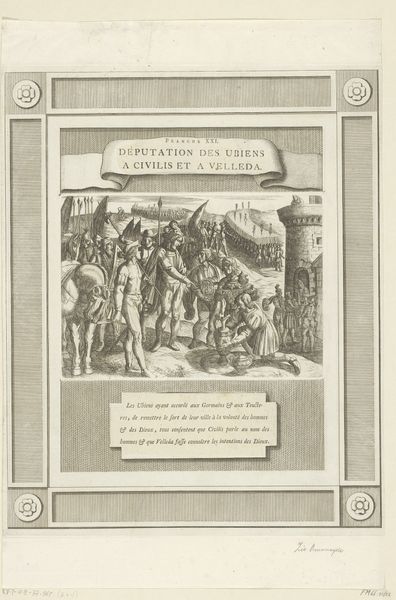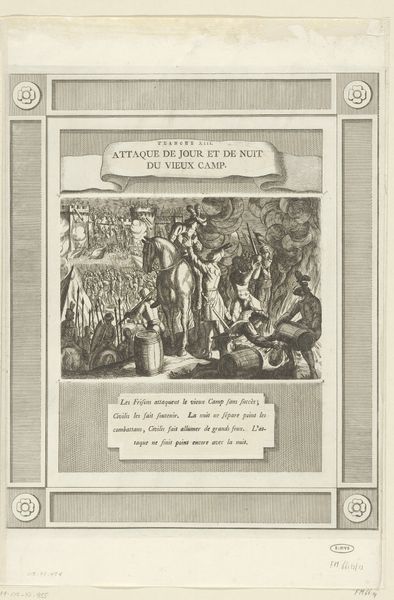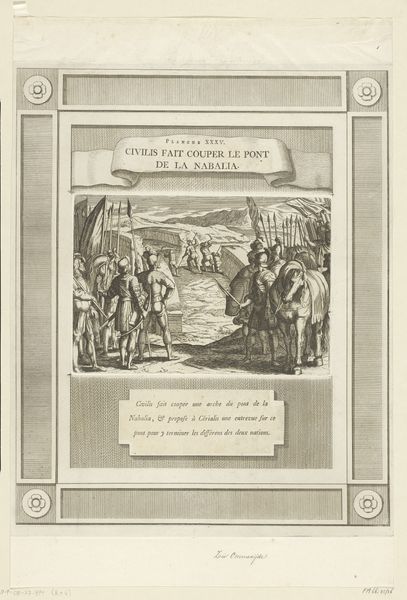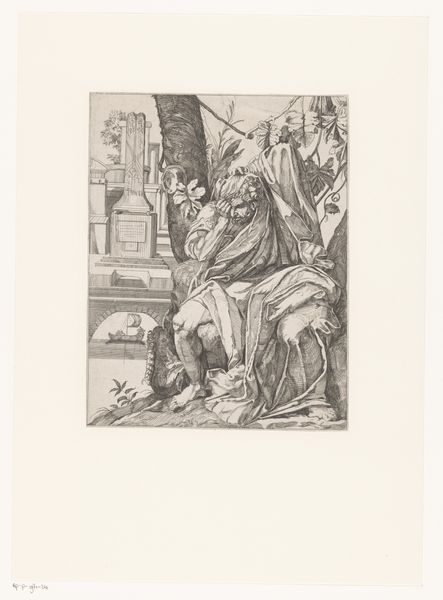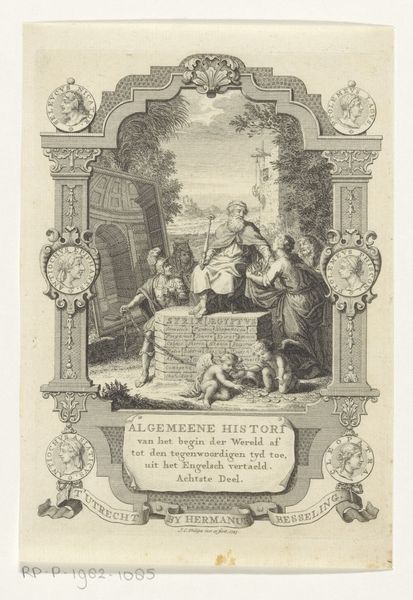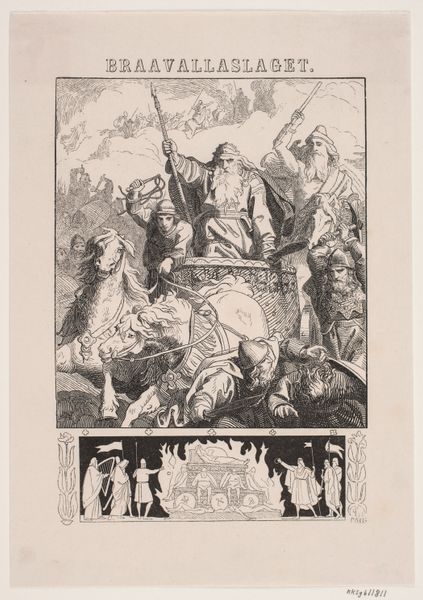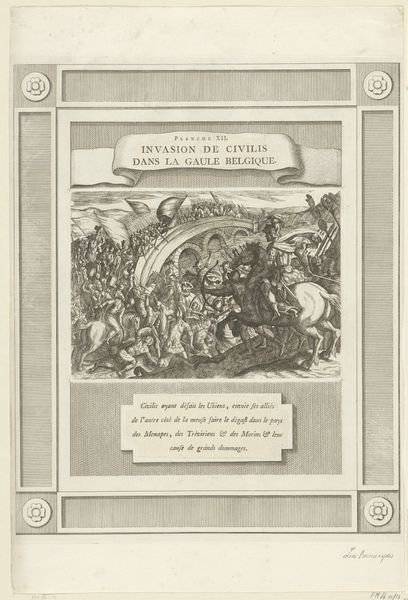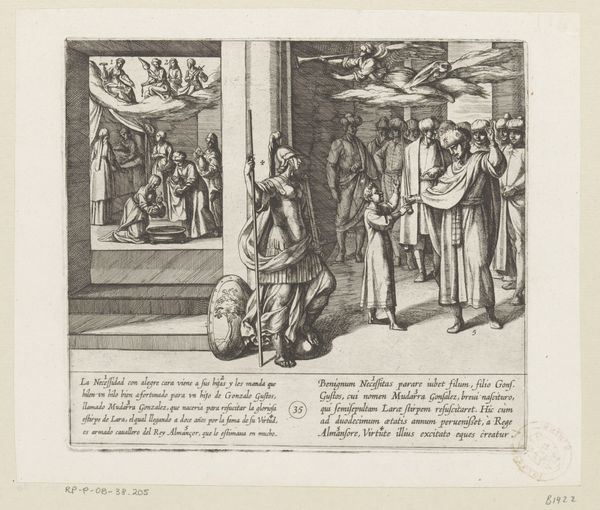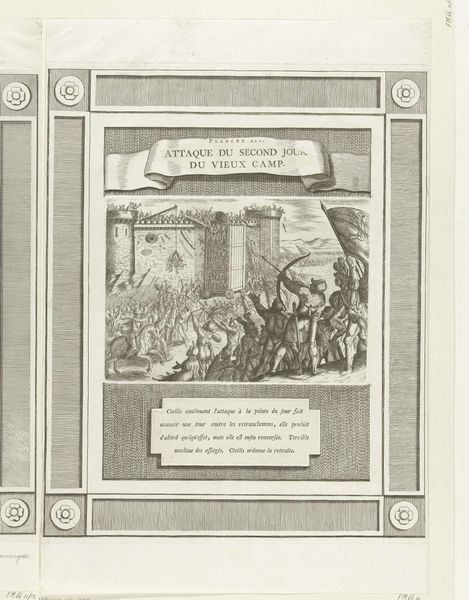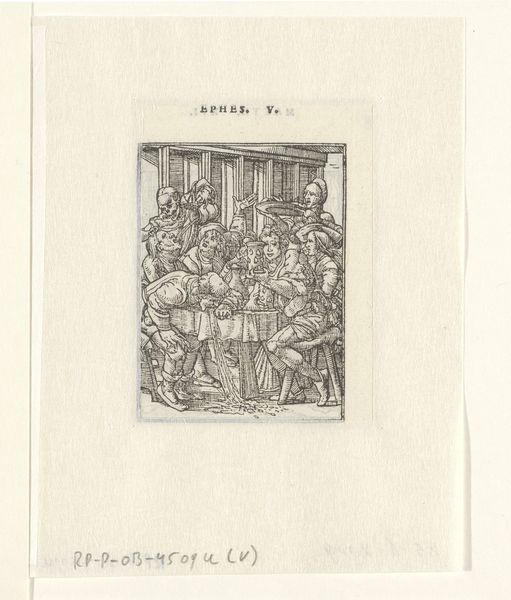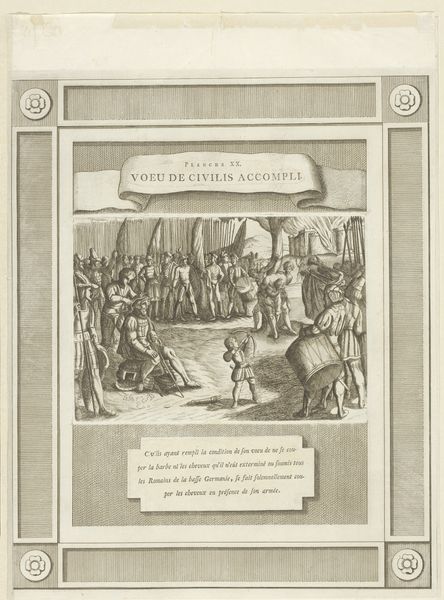
Dimensions: height 140 mm, width 202 mm, height 370 mm, width 300 mm
Copyright: Rijks Museum: Open Domain
This engraving, made by an anonymous artist, depicts Cerialis granting mercy to surrendered soldiers in 69-70 AD. The act of kneeling, prominently displayed here, carries a profound weight. Consider how this gesture echoes through time. We see suppliants kneeling before kings in ancient Assyrian reliefs, medieval knights before their lords, and even in modern political imagery. This posture, laden with connotations of humility, submission, and a plea for clemency, becomes a powerful symbol of human interaction across diverse eras. The act of kneeling can be seen as a collective memory, subconsciously influencing our perception of power dynamics. In each instance, the emotional impact is undeniable, whether it evokes empathy, disdain, or a sense of justice served. The visual language of kneeling is cyclical, continually resurfacing, evolving, and acquiring new layers of meaning as history unfolds.
Comments
No comments
Be the first to comment and join the conversation on the ultimate creative platform.
